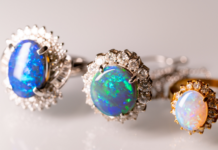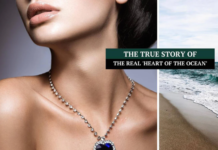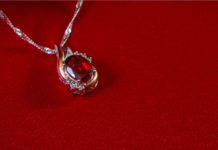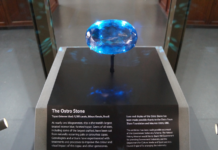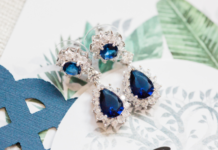Emeralds are one of the most popular and precious gemstones in the world. With their stunning green hue and rich history, emeralds have captured the hearts of people for centuries.
This guide will provide an in-depth look at everything you need to know about emeralds, including their history, properties, uses, identifying real and more…
What is Emerald?

Emerald is a variety of the mineral beryl. It is a beautiful green color that ranges from light green to dark green, with the intensity of the color depending on the amount of chromium or vanadium present in the stone.
Emeralds are typically found in hexagonal prisms, sometimes with flat tops and bottoms, and they are often cut in rectangular or square shapes to maximize their beauty.
History of Emerald
The history of emeralds dates back over 4,000 years when they were first discovered in Egypt. Cleopatra was known for her love of it and even claimed ownership of all emerald mines in Egypt during her reign. In ancient times, emeralds were believed to have healing powers and were used to treat various ailments. They were also believed to bring luck and prosperity to those who wore them.
During the Middle Ages,its became popular among European royalty and were often used in royal crowns and jewelry. The Spanish Conquistadors were also fascinated by emeralds and brought large quantities of them back to Europe from South America.
Today, emeralds are still highly valued and coveted by collectors, jewelers, and enthusiasts around the world.
Properties of Emerald
Emeralds are a type of beryl, and their properties include a hardness of 7.5 to 8 on the Mohs scale, making them a relatively hard gemstone that can withstand daily wear. The chemical formula for emerald is Be3Al2(SiO3)6, and they have a specific gravity of around 2.7 to 2.8.
One of the most important characteristics of it is their color. They are typically a medium to dark green color, but the exact hue can vary depending on the amount of chromium or vanadium present in the stone.
Emeralds may also have inclusions, which are internal imperfections that can affect the clarity and value of the stone. However, some its are prized for their unique inclusions, which can add character and beauty to the stone.
Where is Emerald found?
Emeralds are found in several locations around the world, including Colombia, Zambia, Brazil, and Afghanistan.
- Colombian are known for their deep, rich green color, while Zambian emeralds tend to be a lighter green with bluish tones.
- Brazilian are usually darker green with yellowish tones, and Afghan emeralds are typically lighter in color with more yellow and brown hues.
Uses of Emerald
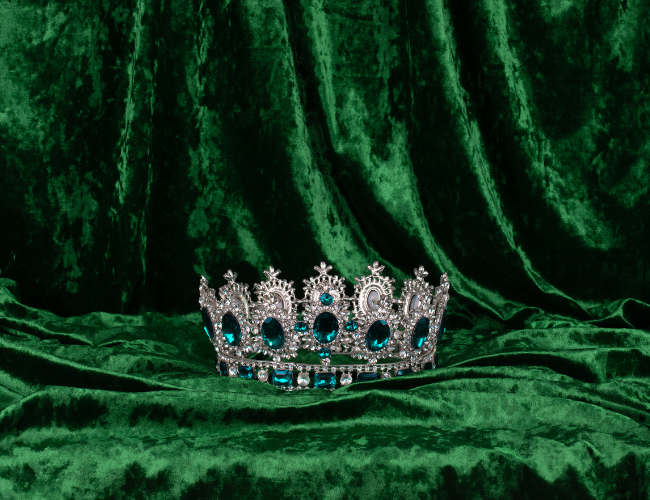
Emeralds are primarily used in jewelry, including necklaces, rings, earrings, and bracelets. They are often paired with diamonds or other gemstones to create beautiful and unique pieces. Because of their durability, emeralds are suitable for daily wear and can be worn in a variety of settings.
Emeralds may also be used in decorative objects, such as vases, bowls, and figurines. Their stunning green color makes them an excellent choice for adding a pop of color to any room.
How to identify real Emerald?
Identifying real it can be tricky, as there are many imitations and synthetic stones on the market. Here are some tips on how to identify a genuine emerald:
- Look at the color: Genuine are usually a deep, rich green color. If the stone is too light or too dark, it may be an imitation.
- Check for inclusions: Emeralds often have inclusions, which are internal imperfections that can affect the clarity and value of the stone. However, if the stone is too clean and free of inclusions, it may be a synthetic stone.
- Test the hardness: Emeralds are relatively hard gemstones with a hardness of 7.5 to 8 on the Mohs scale. If the stone scratches easily, it may not be a genuine emerald.
- Consider the source: Emeralds from reputable sources are more likely to be genuine than stones from unknown sources.
Caring for Emerald
Emeralds are relatively easy to care for, but they do require some special attention to keep them looking their best. Here are some tips on how to care for your emerald jewelry:
- Avoid exposing your emerald to heat or direct sunlight, as this can cause the stone to fade or crack.
- Clean your emerald regularly using a softbrush and warm soapy water. Avoid using ultrasonic cleaners or steamers, as these can damage the stone.
- Store your emerald separately from other jewelry to avoid scratches and other damage.
- Take your emerald jewelry to a professional jeweler for regular cleaning and maintenance.
Famous Emeralds in history
Emeralds have been prized throughout history for their beauty and rarity. Here are some of the most famous in history:
The Mogul Emerald
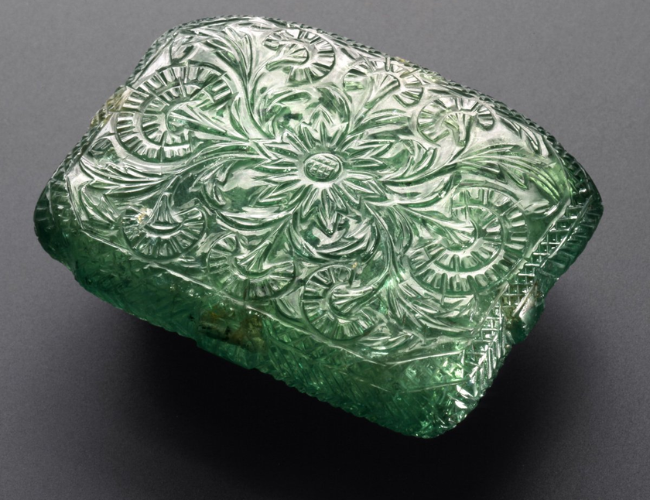
The Mogul Emerald is one of the largest emeralds in the world, weighing 217.80 carats. It has a unique rectangular shape and is believed to have originated from the mines of Colombia.
The stone was once owned by Indian royalty and later passed down to the Mughal emperors of India before being lost for many years. It was rediscovered in 1695 and eventually made its way to England, where it remains today.
The Chalk Emerald
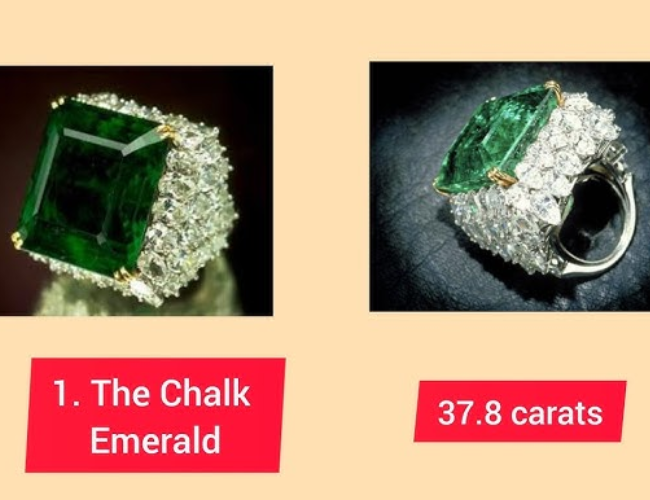
The Chalk Emerald is a stunning 37.82-carat emerald that is considered one of the finest in the world. It has a rich, deep green color and is accented by white diamonds in a platinum setting.
The stone was originally owned by the Maharani Saheba of Baroda and later purchased by Harry Winston, who donated it to the Smithsonian Institution in 1972.
The Duke of Devonshire Emerald
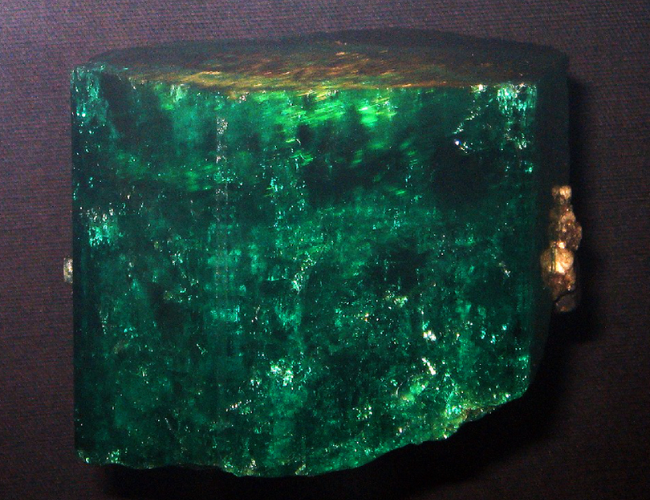
The Duke of Devonshire Emerald is a 1,383-carat emerald that is part of the British Crown Jewels. It was mined in Colombia and was once owned by Spanish royalty before being acquired by the Duke of Devonshire in the 19th century.
The stone is set into a diamond and gold diadem and is considered one of the most valuable emeralds in the world.
Emeralds in popular culture
Emeralds have been featured in literature, film, and other forms of popular culture for centuries. Here are some examples:
The Wizard of Oz
In L. Frank Baum’s classic novel The Wonderful Wizard of Oz, the Emerald City is a vibrant and sparkling city made entirely of emeralds. The city is home to the powerful Wizard of Oz, who grants wishes to those who can make it through the dangers of the Yellow Brick Road.
Elizabeth Taylor’s Jewelry Collection
The late actress Elizabeth Taylor was known for her extensive collection of jewelry, which included several stunning it. Her most famous emerald piece was a necklace that featured a 23.46-carat emerald pendant surrounded by diamonds.
Taylor wore the necklace to many high-profile events and auctions before it was eventually sold at Christie’s for nearly $7 million.
Investing in Emeralds
Emeralds can be a smart investment for those who are interested in gemstones and have a long-term outlook. Like any other investment, however, there are risks involved and no guarantee of a return. Here are some things to consider when investing in emeralds:
- Quality: High-quality with excellent color, clarity, and cut are more valuable than lower-quality stones.
- Rarity: Rare, such as those with unique inclusions or from certain mines, may be more valuable than more common stones.
- Certification: Certified, which have been graded and authenticated by a reputable organization, may be more valuable than uncertified stones.
- Market conditions: Like any investment, the value of emeralds can fluctuate based on supply and demand, economic conditions, and other factors.
Before investing in emeralds, it’s important to do your research and work with a reputable dealer or jeweler who can help you make an informed decision.
Conclusion
Emeralds are a beautiful and fascinating gemstone with a rich history and many uses. Whether you are a collector, jeweler, or simply appreciate their beauty, emeralds are a valuable addition to any collection.
By understanding their properties, history, uses, and how to identify and care for them, you can fully appreciate the wonder of this precious gem.







